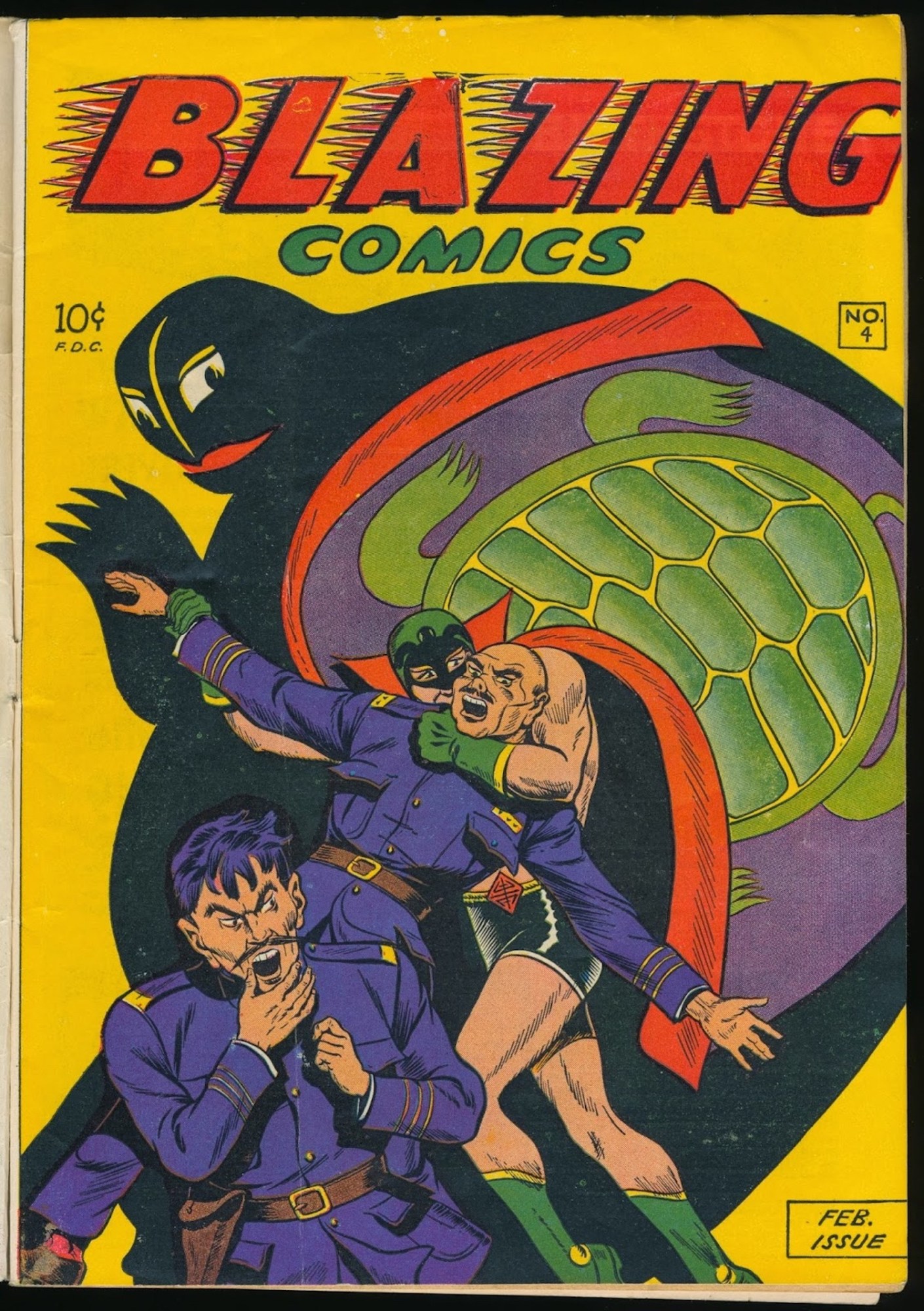Comic books became popularized in the 1930s and 40s — when nuclear bombs and WWII-related xenophobia were permeating Americans’ consciousnesses — and there were relatively few superheroes of color to be found. When there was one, he or she was frequently a B-list hero, built off racial stereotypes and usually the victim of an obscure, short-lived series. We all know about Bat-Man, but what about Bat-Hombre, his one-issue Latin American equivalent? Diversity was not only rare, it was also silenced. The Green Turtle, believed to be the first Asian-American superhero, is the best example of this. Though the Green Turtle series was set in China, Blazing Comics, an American publisher, never allowed its Asian-American creator to show the hero’s face and reveal his racial identity — because they believed it would hurt sales, NPR revealed in 2014.
Marvel’s and DC’s lack of diversity began to change during the Bronze Age of Comic Books (1970-1985). Black Panther (Avengers) and Storm (X-Men) left the sidelines to headline their own blockbuster series and John Stewart, a black male character, stepped into the role of Green Lantern. Since then, the industry titans have tip-toed their way to providing stronger and stronger diversity. Interracial relationships have been depicted, biracial characters have been introduced, and Spider-Man has even been adapted for India. And with news that Aqualad, Aquaman’s sidekick, will be portrayed as a gay black male in the next issue of Teen Titans (due out March 22), intersectionality appears to be comic books’ next big battle.
Some days, it may feel like the bad guys have won. But, oddly enough, it was during the height of cold war tensions and the racial strife of 1938-1955 that comic books experienced their “Golden Age.” We’re all looking for a hero, and there’s a treasure chest of superheroes of color waiting to swoop in and save the day. Here’s ten who hit disenfranchisement with swift uppercuts.
Alias: The Green Turtle
Name: Unknown
First Appearance: Blazing Comics #1 (1944)
Powers: Stealth, superior strength, martial arts
Appears in: Blazing Comics universe
Background: Believed to be the first Asian-American superhero, the Green Turtle was a byproduct of America’s World War II xenophobia. He aided the Chinese government in fighting off Japanese invaders with his Batman-like stealth. His trusty sidekick was Burma Boy, a young beggar he rescued from the Japanese army. Asian-American creator Chu F. Hing wanted Green Turtle to be unquestionably Chinese, but his publishers believed the comic would not sell if this was the case. And so the character was never shown without his mask or given a proper origin story. In 2014, author Gene Luen Yang and illustrator Sonny Liew attempted to undo this silencing of Green Turtle’s Asian heritage. The duo reimagined the obscure superhero in The Shadow Hero, a graphic novel, and unmasked the hero as Hank Chu, the American-born son of Chinese immigrants living in a fictional Chinatown.
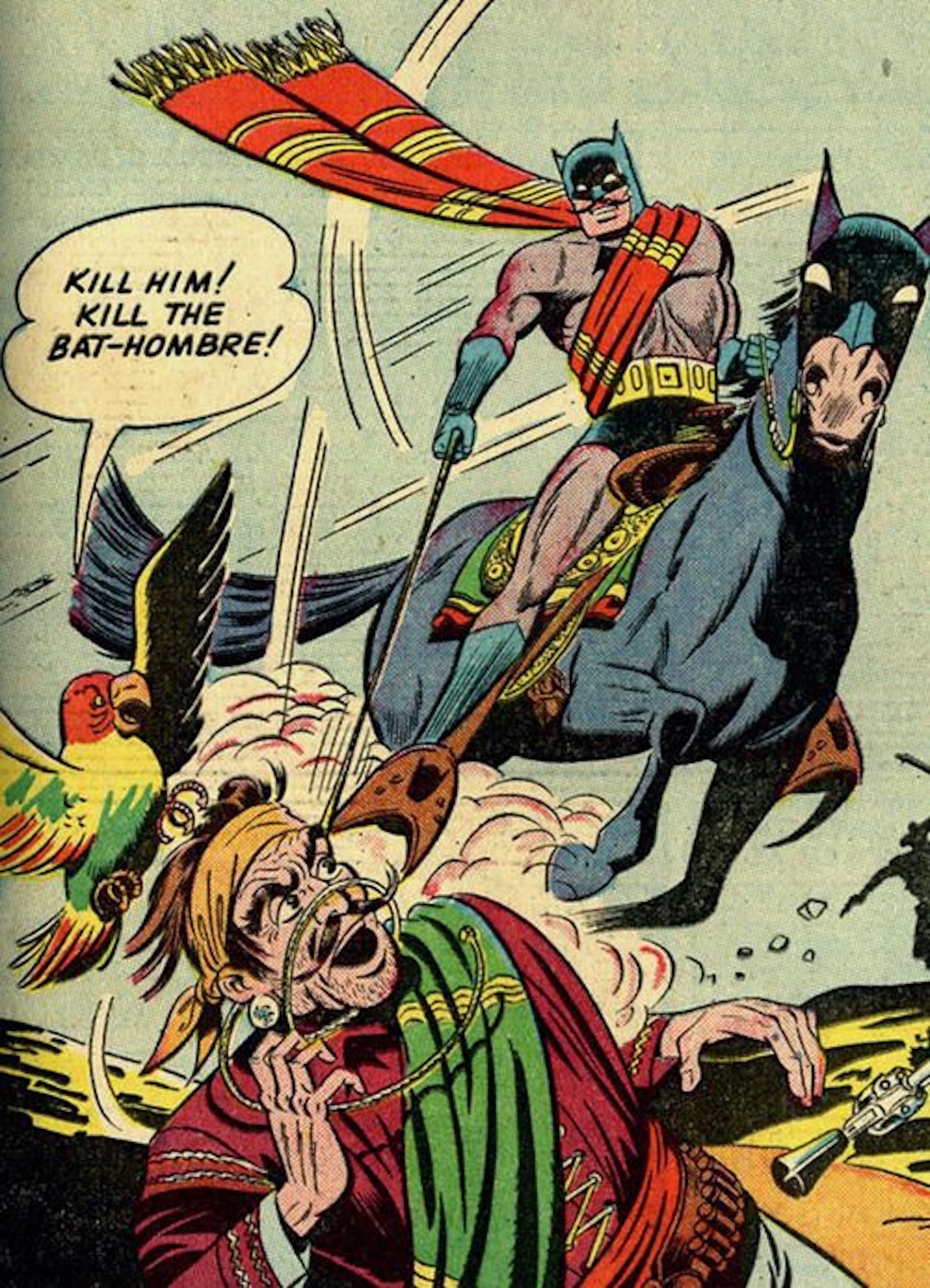
Alias: Bat-Hombre
Name: Unknown
First Appearance: Batman #56 (1949)
Powers: Trained by Batman to be South America’s equivalent superhero
Appears in: Batman universe (DC Comics)
Background: This superhero falls squarely under “cringeworthy.” For whatever reason, in 1949 writers decided to send Batman off to a small, unspecified South American country plagued by cartel-related crime. There, Batman and Robin trained Luis Peraldo to be “Bat-Hombre.” After being trained and equipped with Batman’s tools, it’s revealed that Bat-Hombre is actually a double-agent for El Papagayo, a cartel leader. It’s now up to Batman to take down the very hero he has created. The two face off on a cliff, Bat-Hombre falling and dying.
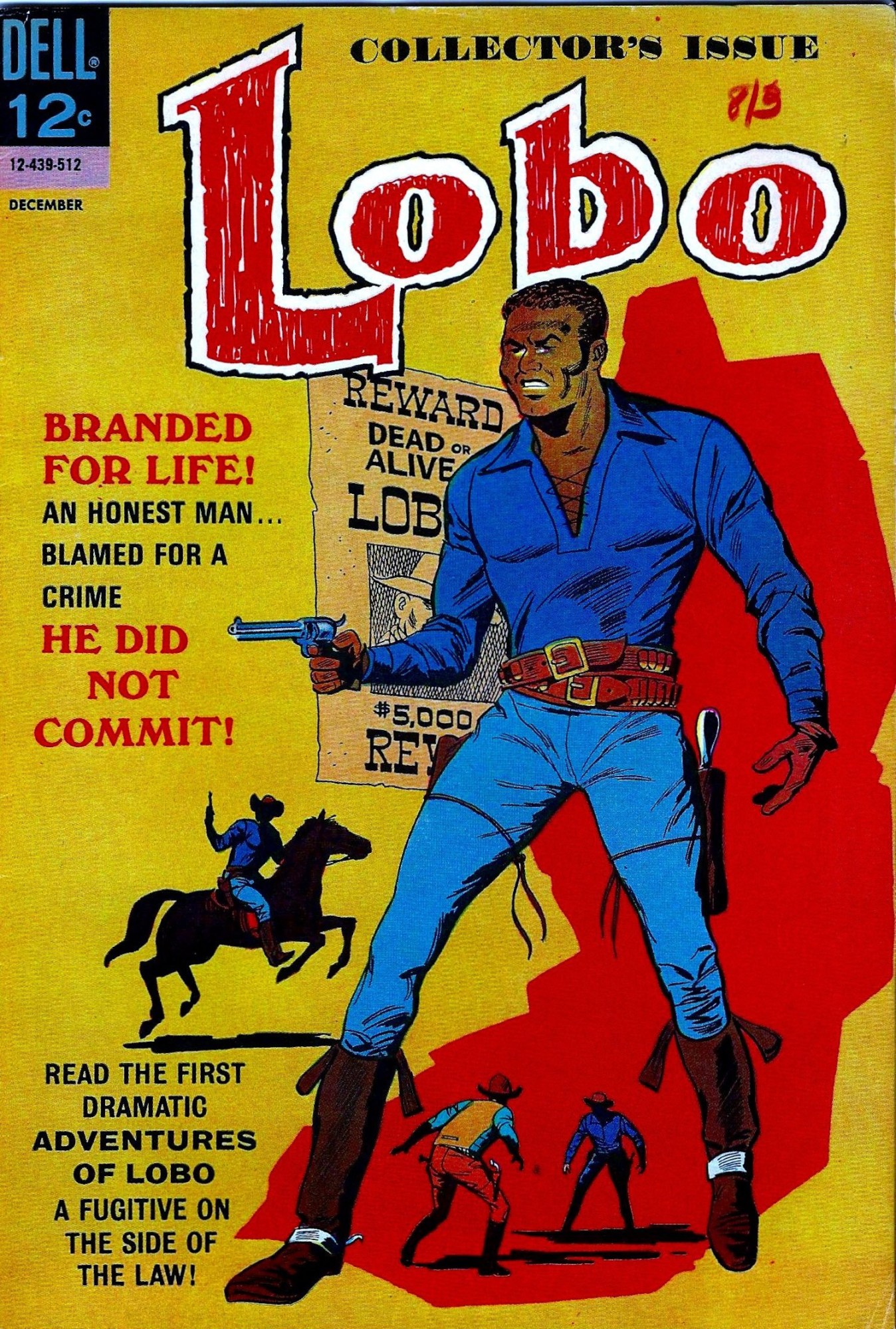
Alias: Lobo
Name: Unknown
First appearance: Lobo Issue #1 (1965)
Powers: Gun-slinging
Appears in: Lobo#1 and Lobo #2
Background: Launched in the 60s by Dell comics, Lobo holds the honor of being the first black character to headline his own comic. The series is set during the aftermath of the Civil War and directly concerns itself with issues of slavery and its lingering ramifications within American society. To no one’s surprise, American audiences and sellers were not too keen on these topics. The series only ran for two issues. Tony Tallario, the legendary black illustrator who created and drew the series, says Lobo #2 only happened because it was made before Lobo #1 was sent out and promptly rejected by sellers.
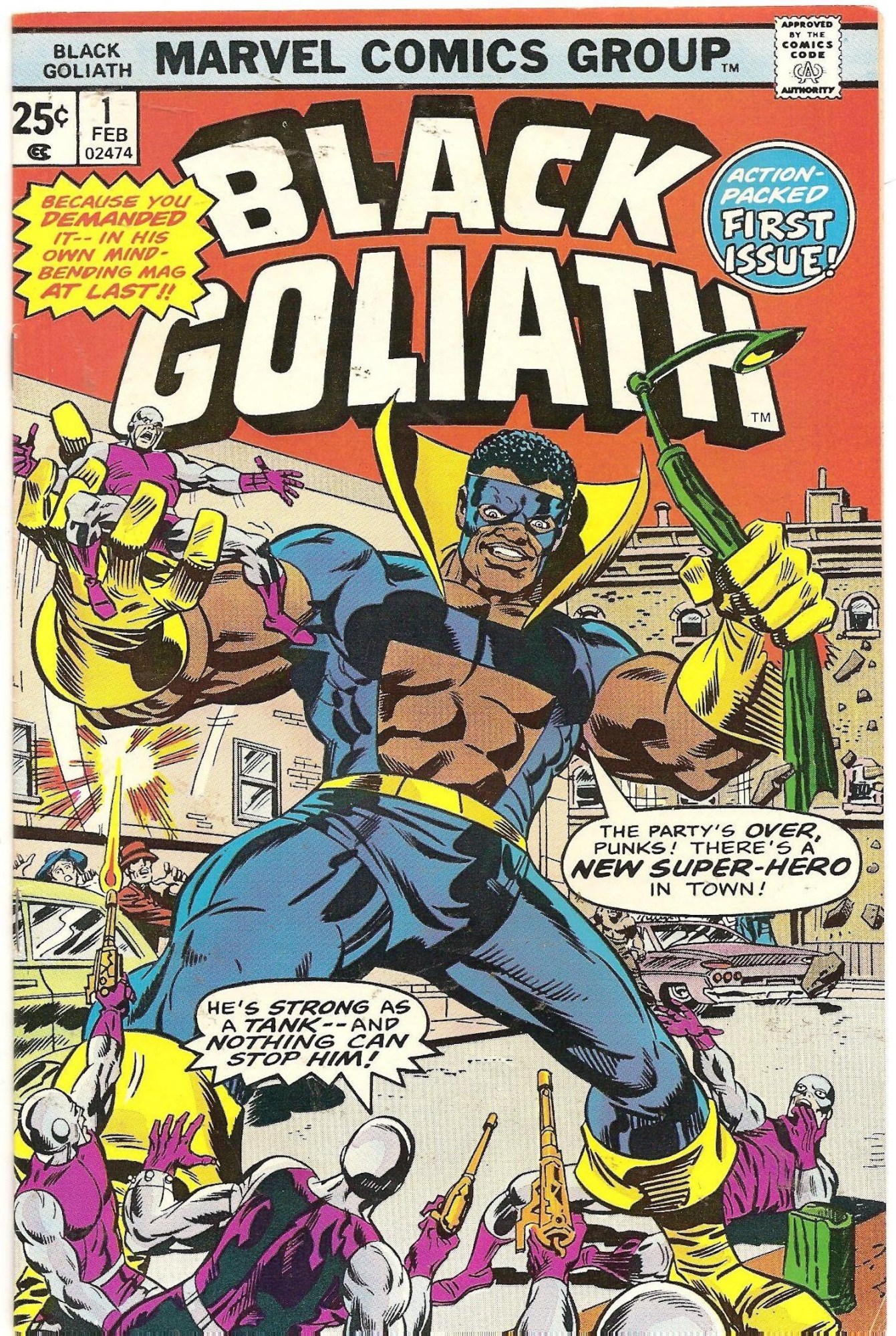
Alias: Goliath
Name: Bill Foster
First appearance: The Avengers #32 (1966)
Powers: Genius IQ and superhuman strength
Appears in: Avengers universe
Background: Marvel character Bill Foster broke the boundaries of black male representation, as a PhD scientist superhero with superior strength and intelligence. He worked his way up at Stark Industries to eventually help develop a top-secret growth compound. After he makes a not-so genius decision to test the formula on himself, he acquires the ability to increase in size and strength. Goliath originally appeared in The Avengers, Iron Man, and Ant-Man, before going on to receive his own comic in 1976: Black Goliath. The series only ran for five issues.
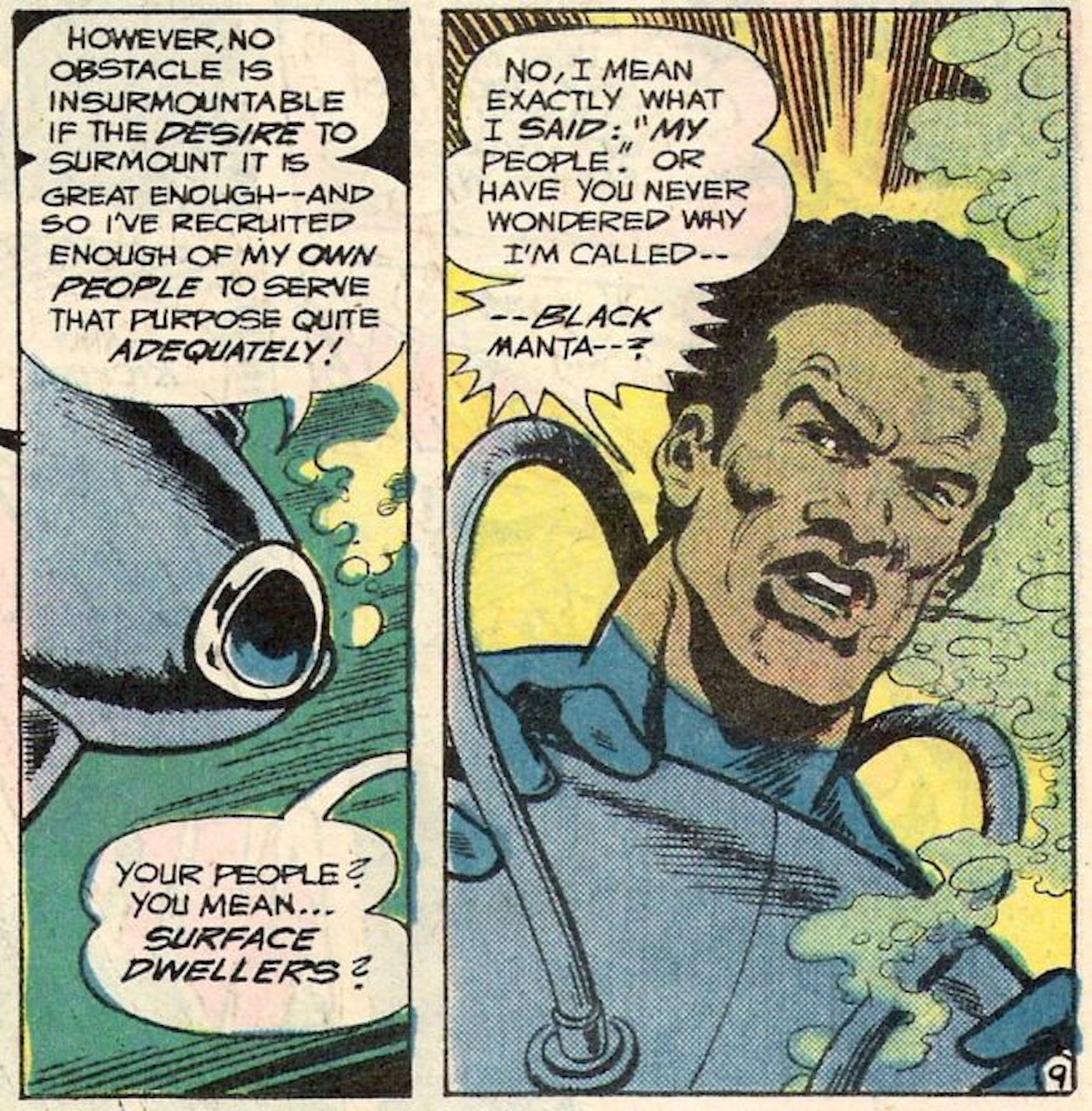
Alias: Black Manta
Name: David (last name unknown)
First appearance: Aquaman #35 (1967)
Powers: A high-tech suit allows him to breath underwater and shoot rays from his eyes
Appears in: Aquaman universe
Background: Black Manta has been Aquaman’s number one nemesis since the hero’s inception, but it wasn’t until 1993 that the character removed his helmet and revealed his racial identity. The pivotal moment adds a poignant nuance to his cruel violence: he wants to create an underwater colony where black people can be free of the prejudice and persecution they continually face on land. Black Manta is set to be the main villain in the upcoming Aquaman film. It’ll be interesting to see how the writers expand on Black Manta’s origin story, especially with racial tensions at a fever pitch.
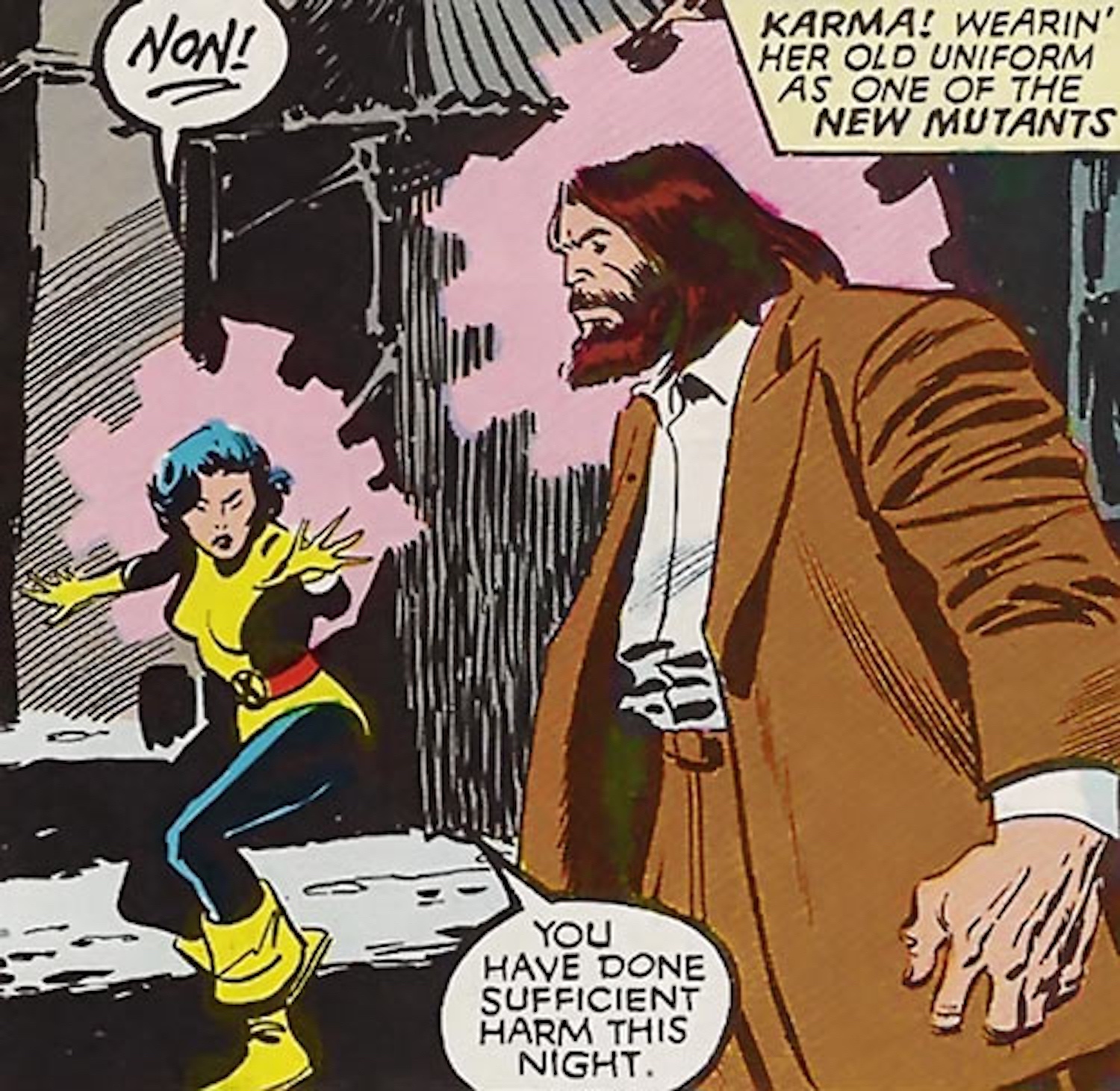
Alias: Karma
Name: Xi’an Coy Manh
First appearance: Marvel Team Up #100 (1980)
Powers: Mind control
Appears in: X-Men universe (Marvel)
Background: Fluent in French and English, Xi’an hails from Vietnam. She was a child during the height of the Vietnam War. When her brother was attacked by a soldier, she discovered her telepathic powers by controlling the soldier’s mind and protecting her sibling. Shortly after that, her father was shot and killed during the fall of Saigon. Her family fled Vietnam on a crowded boat to New York City. There, she becomes one of the first heroes to join Professor X’s team of teenagers, the New Mutants.
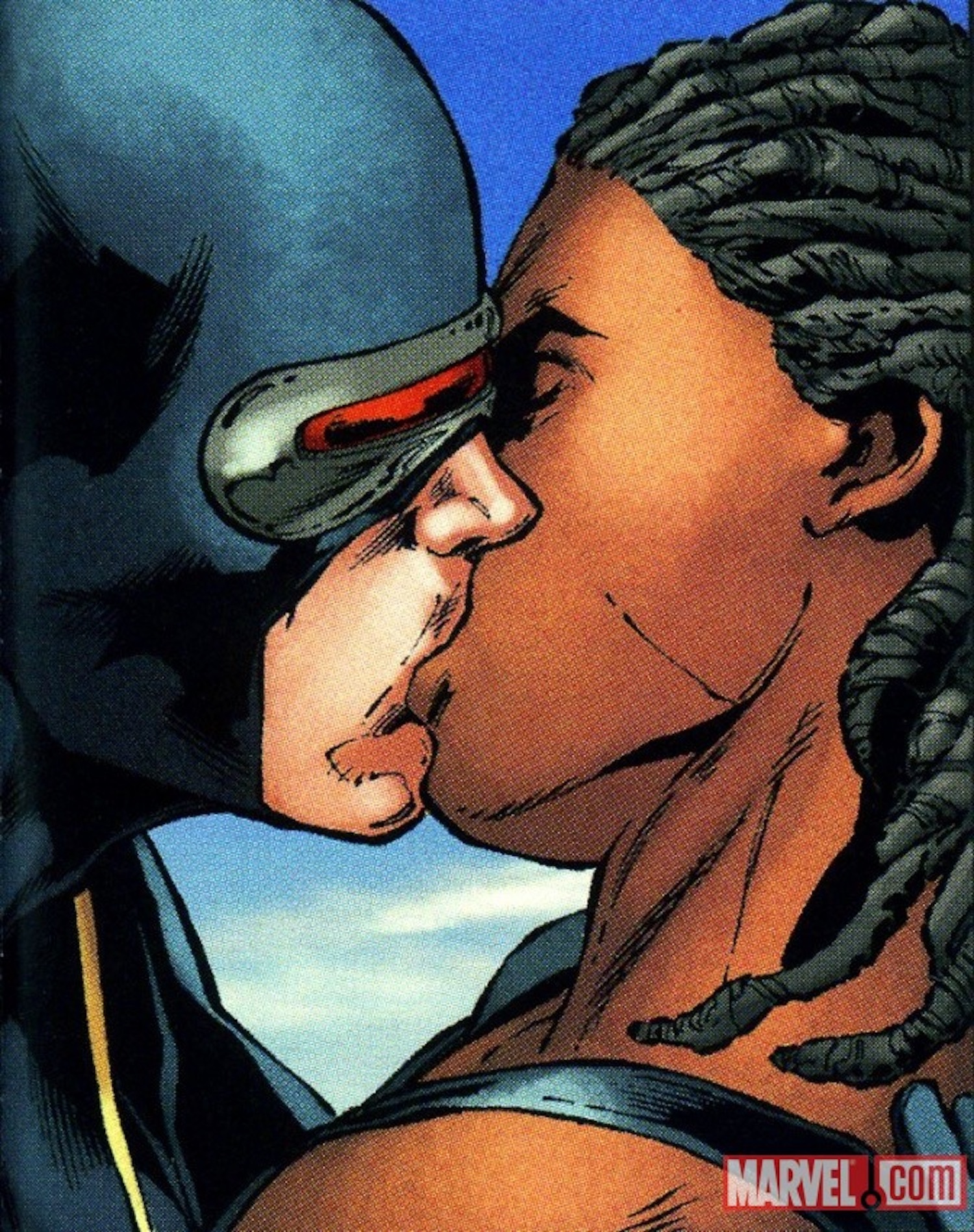
Alias: Frenzy
Name: Joanna Cargill
First appearance: X Factor #4 (May 1986)
Powers: Superhuman strength and steel-hard skin
Appears in: X-Men universe
Background: Beyond Storm, it’s hard to find other prominent black female superheroes in the Marvel and DC worlds. One commonly overlooked character, however, is Frenzy, who has been a recurring character in the X-Men universe for 30 years. Frenzy has continuously flip-flopped between being a hero and a villain. Some days she uses her superhuman strength to aid Magneto and some days she uses it to support Professor X. Her biggest storyline, perhaps, was when she dated Cyclops, engaging in one of the few interracial relationships found in Marvel comics.
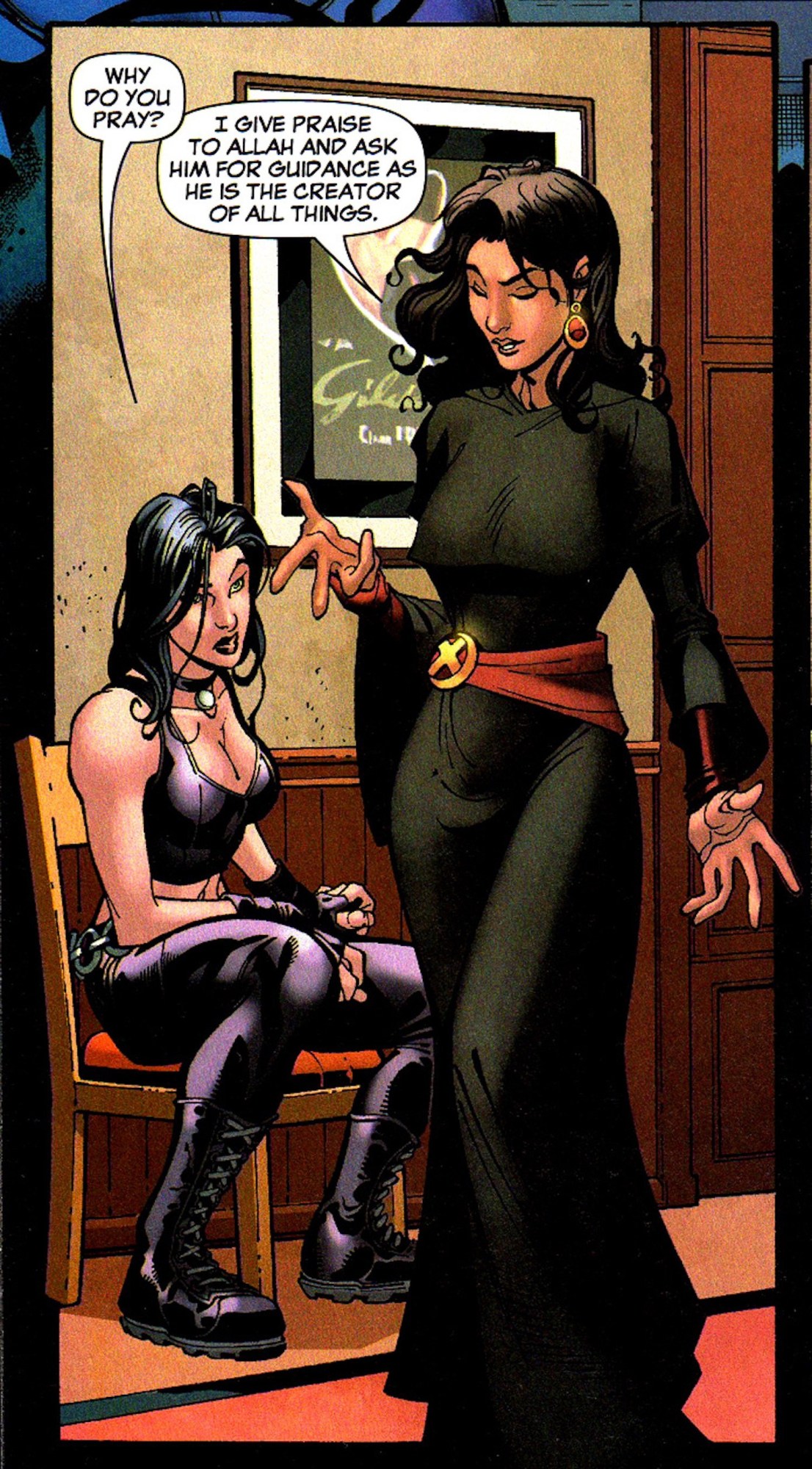
Alias: Dust
Name: Sooraya Qadir
First Appearance: New X-Men #133 (2002)
Powers: Ability to transform into and control sand
Appears in: X-Men universe
Background: Dust is a Sunni Muslim teenager from Afghanistan. She first harnessed her powers when a member of the Taliban assaulted her and attempted to remove her traditional niqāb. The character is a direct byproduct of post-9/11 concerns. She first appeared in 2002, when Wolverine rescued her from the Taliban. The character does not reappear until 2005, when she gets dialogue and a full personality. Dust has gone on to feature in a number of storylines and alternate X-Men universes, tackling important issues regarding Muslim representation. From her personal choice to wear a burqa to defending her Islamic faith, Dust has provided critical visibility for Muslims in comics.
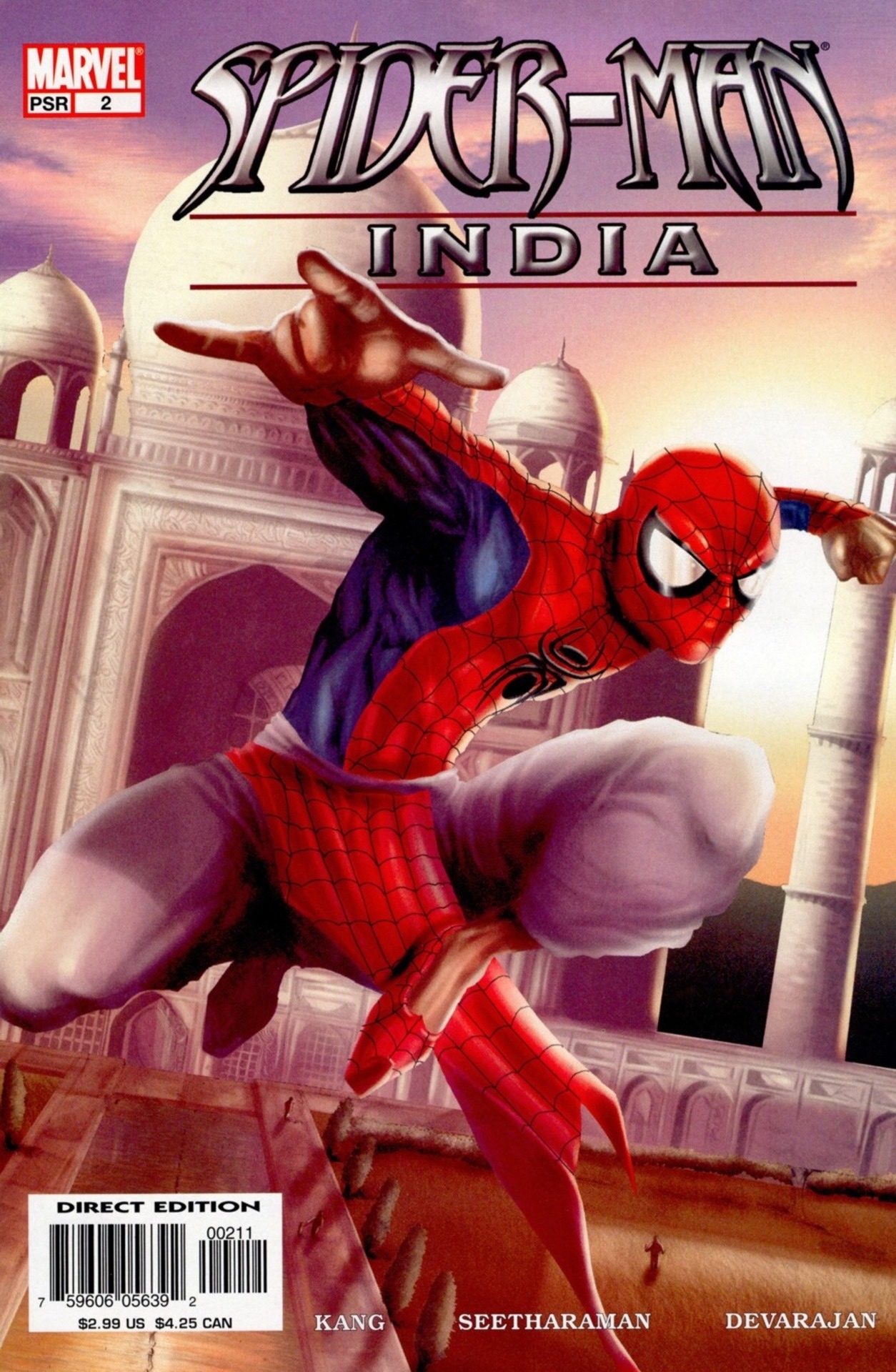
Alias: Spider-Man
Name: Pavitr Prabhakar
First Appearance: Spider-Man India (2004)
Powers: Web-slinging, super strength, spidey senses, flexibility
Appears in: Spider-Man India and Spider-Verse
Background: On the surface, Spider-Man India looks like a western comic shamelessly adapted for a burgeoning middle-class Indian market. However, drawn by famed Indian comic artist Jeevan J. Kang, the short-lived series cleverly metamorphosizes the web-slinging hero into the protagonist of a mystic, Hindu-inspired “Man vs. Mythology” tale. For example, instead of gaining his powers through a spider bite, Mumbai teenager Pavitr Prabhakar acquires his abilities through a yogi ritual. The comic is filled with delightful parallels: Uncle Ben is now Uncle Bhim and Mary Jane becomes Meera Jain. The series’ main villain, Nanlin Oberoi, who performs an ancient ritual to become possessed by a demon, is a modern reinterpretation of the Hindu demon Ravana.
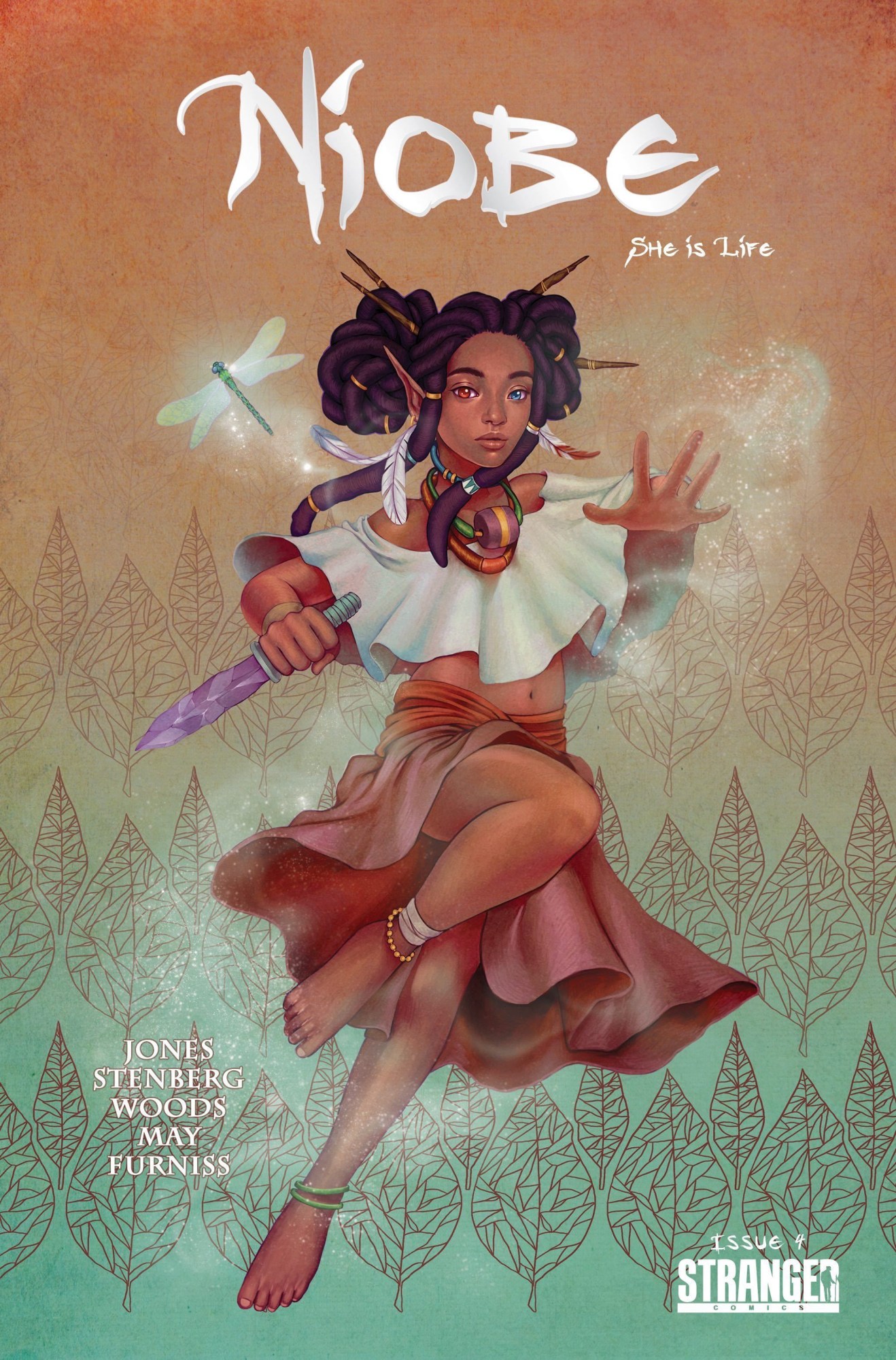
Alias: Niobe
Name: Niobe Ayutami
First appearance: The Untamed: A Sinner’s Prayer (2015)
Powers: Half-elf, half-human warrior
Appears in: Niobe: She is Life
Background: Co-written by Amandla Stenberg, Niobe is the coming-of-age tale of an orphaned warrior destined to save the fantasy world of Asunda. Half-elf and half-human, half-African and half-European, the “chosen one” has to nativage her multiple identities. “I was drawn to give voice to Niobe and co-write her story because her journey is my journey,” Amandla told Huffington Post shortly before the graphic novel’s release in 2015. “I connect to her mixed racial background and quest to discover her innate powers and strengths, to learn who she truly is.” Featuring the drawings of Ashley A. Woods, Niobe stands out for not only being a character penned by a black writer, but illustrated by one too.
Credits
Text André-Naquian Wheeler
